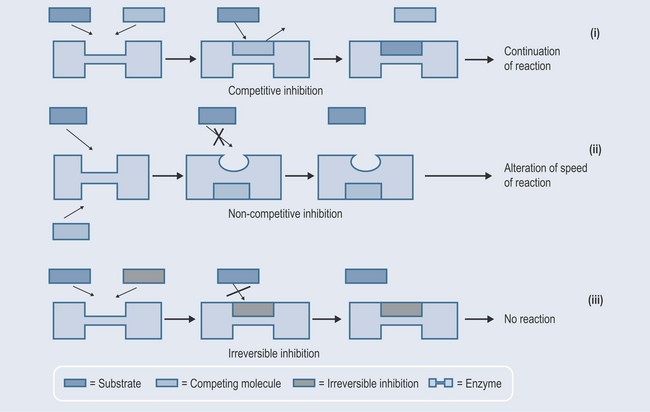Chapter 19 Pharmacodynamics
How drugs elicit a physiological effect
Proteins play an integral role in controlling body functions through their roles as:
The chemical composition of protein molecules allows for great variation in three-dimensional structure, creating sites which, generally speaking, will interact only with specific molecules that are able to fit into the particular site (see Figure 11.5, p. 84). Most drugs act by interfering with this process at the molecular level, fitting into sites intended for the original protein molecule.
The ‘Lock and Key’ Hypothesis
The simplest way to consider the action of a chemical on an enzyme or receptor is the concept of the ‘lock and key.’ A bond is made with the enzyme or receptor (Figure 19.1). If the protein is an enzyme, a chemical reaction will take place; if it is a receptor, it might trigger a chemical reaction or start a chain of events leading to a physiological response.
Enzymes
Enzyme Inhibition
• Competitive Inhibition
• Non-competitive Inhibition
• Irreversible Inhibition
Stay updated, free articles. Join our Telegram channel

Full access? Get Clinical Tree




